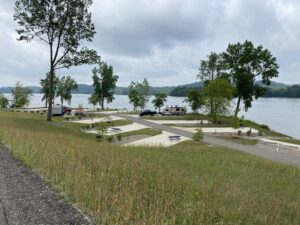
INDUSTRY TRENDS
Helping New and Current Franchisees Succeed
October 10, 2021 | WRITTEN BY: Environmental Design Group
Written by: Stefanie Smith, AIA, LEED AP BD+C & Dave McCallops PE
Here’s an example of a problem – call it the danger of wishful thinking, if you want to – that we’ve encountered a number of times: An investor was determined to build a campground and had picked out a site he thought was perfect. It was a stunning piece of land, the type that might make the list of top-10 beautiful places to visit.
In his enthusiasm, the investor neglected to undertake a feasibility study to determine the practicality of developing the site. If he had, he would have learned there were serious drawbacks. The terrain was too hilly and the nearest utilities were miles away, putting development costs out of reach.
The lesson to be learned is that while family camp-resorts can be lucrative investments, they’re far different from other types of commercial and hospitality developments. The key is to prepare a solid master plan that is flexible and includes options to address unexpected snags that may arise during the design and construction phases. Problems with the terrain, utilities or even local government requirements can delay progress if not quickly solved.
A detailed feasibility analysis is the first step to determining if a site is suitable for a campground. The same type of analysis also helps current operators learn whether proposed expansion plans are cost-effective.
When we begin a feasibility study, our design team immediately looks for any fatal flaws that will prevent a Jellystone Camp-Resort from being built on a proposed site, such as steep slopes, significant wetlands, flood plains and other natural impediments. Once we determine that the site deserves further analysis, the team works with the developer to create a high-level, preliminary layout of the campground which typically includes:
- Locations of RV and cabin sites
- Amenities such as lakes, pools and water parks, the Ranger Station store, play areas, dog parks and activities buildings
- A traffic management plan that allows for adults and kids to get around safely
- Infrastructure, including the all-important WiFi system
One of the biggest challenges is finding a site with access to water and sewage. If not readily available, there needs to be enough space to house a wastewater facility. And stormwater management is very different in a campground or RV park than it is in any other commercial development. Using detailed analysis, we helped one campground save $400,000 on its stormwater plan. Knowing early on that electrical service is nearby also is critical.
Having crafted several master plans for Jellystone Park owners, we’ve come to understand just how unique a concept Jellystone Park is. Ultimately, if your goal is to open a profitable camp-resort as quickly and efficiently as possible, it’s important to work with a design firm that has the expertise and resources to fast-track your project.
See original article here.
RELATED TAGS:
[xyz-ips snippet=”comment-form”]




